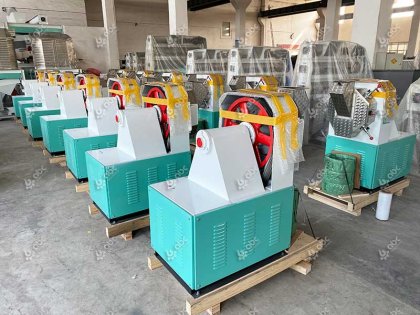Coffee husk is the residual product from coffee cultivation. The husks are used for the extraction of caffeine and tannin. Most importantly the coffee husks are suitable materials for the pellet making machine to be used to replace fossil fuels such as coal. The coffee pellets can be used furnace, pellet stove or heating rooms in schools, market place, companies and in hospitals. These pellets can partly or entirely replace fossil fuels in firing large scale industrial processes to reduce the cost of energy.
During coffee processing, the cherry and the husk are removed from the cherry to make the coffee bean. The processes release solid wastes such as the coffee husks. The different processing technologies for the coffee are bound to produce the husks with different characteristics in regard to moisture and composition.

Turning coffee husks into pellets involves a series of processes which include:
- Collecting the raw materials: For large scale production, a lot of material will be required. Choose a processing location that is close to the raw materials to lower the transmission costs.
- Crushing the coffee husks into the required sizes: Use a crushing machine to crush the collected materials. The particles average length should not exceed 5mm. Small particle sizes will lead to more efficient pellets.
- Drying and blending: The moisture content of the particles is lowered to 15% by the use of a drying machine to prepare them for pelletizing. However, if the moisture content of the particles is already less than 15% there is no need for drying. The blender is used to mix the crushed material with other materials for increased carolific value.
- Pelletizing: The pelletizing of the crushed material is done using the ring die pellet mill. The machine is heated up to help the lignin of the coffee husks. When the crushed material is put into the machine, the machine turns them into pencil sized pellets.
- Cooling and packaging: Use a cooler to cool the pellets before handling them, sieve the pellets that failed to from properly to avoid breakage.
After the husks have been processed, the automation and combustion value will have been increased sharply. With the increased combustion value and in a uniform size, the pellets can be used in boilers, stoves, factories, household heating and in power plants.
With the increasing demand for the bio fuel pellets, an increasing number of power plants are using the coffee pellets for energy generation.
(Learn about complete coffee husk pellet plant)
The coffee husk pellets are growing in popularity as they are:
- Renewable: The coffee husks pellets provide a sustainable biomass that can be harvested throughout the year.
- Efficient: The pellets are consistent in quality and the moisture content.
- Clean: The pellets are free of any contaminants and burn clearly with the production of low ash
- Economical: The husks have an attractive carolific value and offer significantly low energy costs.
- Friendly: The pellets can be used in different types of furnaces and have different applications such as power generation, cooking and heating.
- Responsible: The pellets have a reduced carbon footprint that promote and enhance the green culture
















